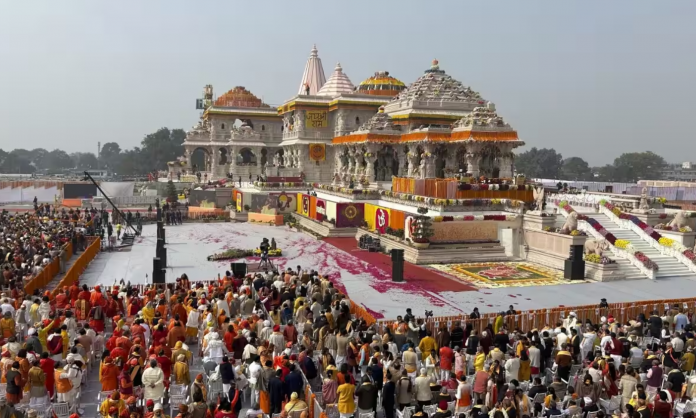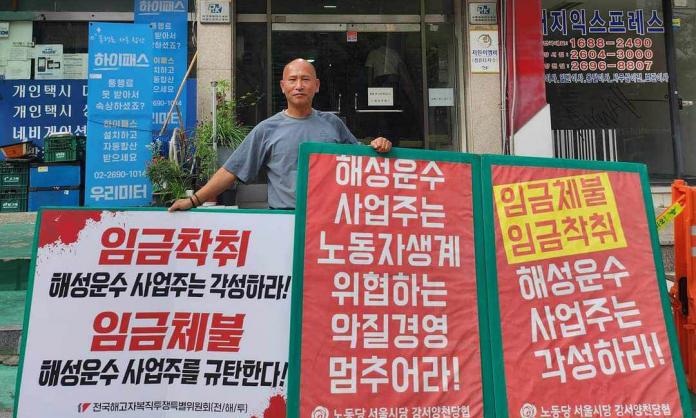Hong Kong Polytechnic is calm, the barricades enormous, and the graffiti ubiquitous. Among the slogans are “Liberty or death”, “Kill someone, pay the price”, and “If your family member were killed, would you still go to work?” The last is an exhortation for the city’s workers to strike over the death of 22-year-old Chow Tsz-lok last week. Police say he fell from a car park. Students don’t believe it.
Several buildings have been smashed up, including the ground floor of the registrar’s office. Masked students chat in a coffee shop amid the shattered glass. Others continue spraying political slogans on the ground outside the student association and on walls not already covered. Two more drive seconded maintenance vehicles about. On the roof, a lookout keeps watch. They are nervous, one student says, about another police offensive, like that at the Chinese University of Hong Kong (CUHK).
CUHK is under siege. The train line to it has been shut and, being in the outer east of the region, you can get there only by car. But police have set up roadblocks to control who goes into the area. The university has cancelled all classes until the end of the year and is telling resident students to leave. It is an ominous development that will isolate the activists on campus and open them to a perhaps more ferocious attack. At least 60 people were injured when police invaded the campus on Tuesday, firing rubber bullets and tear gas. It wasn’t just current students. Many alumni rushed to the university to help. The university president and other officials came to negotiate with police. They were tear gassed as well.
The university has historically been one of the centres of student activism in Hong Kong. And it has been at the forefront of opposition to the now-shelved “extradition law” – a catalyst for the current upheaval because it would have allowed Hong Kongers to be extradited to the mainland for trial and imprisonment. “These students have been very active”, Au Loong Yu, a veteran activist and author, says in his office on the other side of town. “CUHK got the moniker ‘Riot University’ from pro-Beijing netizens and it has been taken up by many people. They and the police say the dorms are factories for producing Molotov cocktails and that the university encourages it.” CUHK militants certainly are tough. After suffering the assault on Tuesday, today (Wednesday) students were testing a catapult they built to launch petrol bombs at police when they next try to take the campus, according to a report in the South China Morning Post. There is consensus here that CUHK is the most important centre of university activism and – depending on which side you are on – that it must be either defended or crushed.
Barricades defend several universities across Hong Kong as the situation escalates. There are five demands of the movement. First is the complete withdrawal of the extradition bill. Second is that the government retract its labelling as riots the mass protests that happened on 12 June. Third is the release and exoneration of arrested protesters. Fourth is the establishment of an independent commission of inquiry into the police. Fifth is the resignation of Hong Kong chief executive Carrie Lam and the granting of universal suffrage. They have won only the first demand. It’s not enough.
“The extradition bill exposed that China wants to finish off Hong Kong autonomy once and for all – not in 30 years, not in 10 years but in one or two years. Not officially – that would not be good for them economically – but in practice”, Au says. “Why do you think even all the old people like me are yelling? We are known to be very calm here in Hong Kong. But the fight to defend our autonomy overrides everything.”
The students know they have mass support. And they know they can’t win by themselves. But right now, they are fighting alone and are desperately trying to provoke a general strike by causing mayhem wherever they can. They are left to substitute themselves for a working class which seems happy enough to be disrupted for the cause, but whose leaders are unwilling to call them out to defend the students.
Near the polytechnic in Hung Hom, a barricade has gone up, in both the “construction” and the “in flames” senses, at the entrance to a road tunnel to Hong Kong Island. Today is chaos – sabotage, firebombs, roadblocks, protests and confrontations across the city. The metro intermittently shuts down lines and stations to stop people coming to the flash points in solidarity. In a city with such a reliance on the train system, it is an effective weapon in the hands of the authorities. But the greater the number of lines and stations closed, the more pressure there is on the roads, which makes student road blockades even more effective.
Behind the scenes, the protesters seem to have a high level of coordination; actions in different part of the city are complementary. But there are also differences. “It’s not a unified movement; it’s a multi-tendency movement”, Au says. There are the “localists” – those who want full independence and tend to be xenophobic, right wing or far right anti-Chinese nationalists. They influence the movement through propaganda and social media, “but they have no organisational muscle”. There is also no organised left. Most actions are coordinated via messenger services. They are just young people fighting for their future. At the Polytechnic this feels confirmed.
What about the militant core of masked groups – how many are anarchist and how many are the far right? Is it possible to tell? Au bristles at the use of the term “black bloc” to describe these students. Not because some of them are most certainly provocateurs from the Hong Kong police, the Chinese police and the mafia. But because politically, he says, it is misleading. He gives a short history lesson. While the Chinese University has been important, it was never anything like the Western universities where various currents of Marxism and anarchism flourished at different times. One of the university colleges was founded by Chinese liberals in the late 1960s. It was less elitist than Hong Kong University, the main establishment campus. But there is no legacy of deep radicalisation. The students today are still of this general progressive ilk. There is no indication, he says, that there is a radical left developing – layers of students reading Marx or Bakunin for example. So, by Au’s estimation, the “masking up” by protesters is purely tactical and has very little, if any, ideological content. Everyone is doing it to protect themselves.
Either way, under the circumstances, it is probably a wise tactic. The stakes here are extremely high. China is demanding that the government crack down. The liaison office says Hong Kong is “sliding into the abyss of terrorism”. And the Hong Kong government is promising retaliation against activists. One minister warned protesters that there will be “no place to hide” when they start identifying people. The words have no effect. In the evening, Mong Kok is in another confrontation. So too Yuen Long, Kwai Chung Estate, Tai Po and Sheung Shui. Smaller actions of sabotage are happening all over. There is concern that the serious police offensive against CUHK is getting closer, so, again, the students are “blossoming everywhere” to spread police resources thin.
The young protesters seem like an unstoppable force. But in Beijing, they face an immovable object. It can’t keep going on like this for much longer.










